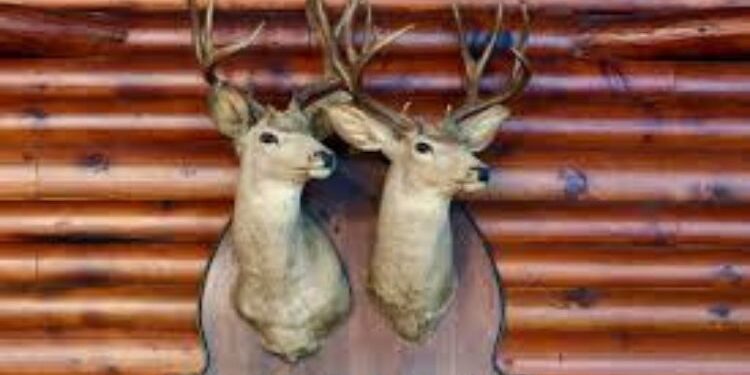For hunters, successfully bagging an elk is an accomplishment that deserves to be preserved for years to come. One of the best ways to preserve this magnificent creature is through taxidermy, which allows you to display your trophy proudly in your home or office. But to ensure your elk mount remains in pristine condition, it’s essential to follow specific guidelines and care techniques. Here are five expert tips for preserving your elk mount trophy with taxidermy.
- Choose a Professional Taxidermist
The first and most important step in preserving your elk mount for sale is selecting the right taxidermist. While it may be tempting to choose the cheapest or most convenient option, your trophy deserves a taxidermist who specializes in large game animals, particularly elk. A professional taxidermist will use high-quality materials and techniques to ensure the mount not only looks realistic but also lasts for generations. Be sure to check reviews, ask for examples of past work, and confirm that the taxidermist has experience with elk specifically.
- Proper Field Care Before Transporting
Once you’ve harvested your elk, it’s crucial to take the right steps to ensure the preservation of the animal’s skin and antlers before transporting it for taxidermy. The most important thing is to handle the animal carefully to avoid damage to the hide, antlers, or other parts that will be mounted.
Start by field-dressing the elk immediately to remove any internal organs, which can decompose and cause odor or staining. Avoid dragging the animal, as this can cause the skin to tear or stretch out of shape. If you’re hunting in a remote area, try to protect the hide by covering it with a tarp or other material to keep it clean and safe from the elements. It’s also important to keep the antlers free from damage during transport.
- Ensure the Skin Is Properly Treated
The preservation of the elk taxidermy begins with proper skin care. Once the elk is field-dressed and transported to the taxidermist, they will begin the process of tanning the hide. Tanning is necessary to prevent the skin from decomposing and to make it durable for mounting.
To help the process, ensure the hide is kept cool as soon as possible after the kill. Warm temperatures can promote bacteria growth and damage the skin. It’s also essential to dry the skin properly before it undergoes tanning. Your taxidermist will be able to guide you on this process, but the general rule is to avoid letting the skin dry out in direct sunlight or under heat sources.
If you plan to mount the animal yourself, be sure to salt the hide thoroughly and allow it to dry slowly in a cool, dry location, away from direct sunlight. Never freeze the hide, as freezing can damage the hair follicles and make it difficult for the taxidermist to work with.
- Avoid Direct Sunlight and Extreme Temperatures
Once your elk mount is complete, proper placement in your home is essential for its long-term preservation. One of the most common mistakes people make is hanging their elk mount in direct sunlight or in areas with fluctuating temperatures. Prolonged exposure to direct sunlight can cause the hide and antlers to fade, and extreme heat or cold can cause cracking or warping.
To preserve your elk mount, hang it in a location that avoids direct sunlight and temperature extremes. Rooms with consistent, moderate temperatures are ideal. If you’re placing your elk in a room with windows, consider using curtains or blinds to shield it from the sun’s rays. Avoid areas like attics, basements, or garages where temperature and humidity levels fluctuate. Similarly, keep your elk head for sale away from vents, fireplaces, or areas with high humidity.
- Regular Cleaning and Maintenance
Ongoing care and cleaning are essential to ensure the longevity of your elk mount. Dusting the mount regularly with a soft, dry cloth is the best way to keep it looking sharp. Avoid using any cleaning products, as chemicals can damage the hide or antlers. If there are any areas that are particularly difficult to clean, use a soft brush to gently remove dust.
It’s also important to check the mount periodically for any signs of damage, such as loose antlers or any tears in the hide. If you notice any issues, it’s essential to have them addressed by your taxidermist as soon as possible to prevent further deterioration.
Another key tip is to keep the mount away from pets, which may be tempted to chew on or scratch the elk mount. Similarly, avoid touching the mount too frequently, as oils from your skin can transfer to the hide and cause discoloration over time.
Conclusion
Taxidermy is a great way to preserve your elk trophy for future generations to admire, but only with the proper care and attention. By choosing the right taxidermist, properly caring for the animal in the field, and ensuring your mount is kept in a safe, controlled environment, you can ensure your elk mount remains a stunning tribute to your successful hunt for many years. With regular maintenance and thoughtful care, your elk mount will continue to be a lasting reminder of your adventure and achievement.



